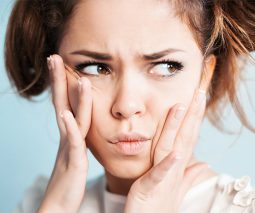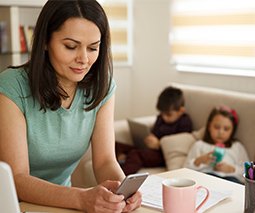Bad habits: How to make your bathroom waste-free

Erin Rhoads is on a mission to help everyone live with less waste.
“Change starts with me,” says Erin. “And it’s not as hard as people think it could be.” But a good motivator, according to Erin, is thinking about the kind of world we are going to leave our children.
Listen to Erin Rhoads on Feed Play Love
The Rogue Ginger’s mission: Do you choose to accept it?
Erin’s road to change came after watching the eco-documentary, The Clean Bin Project, which inspired her own journey to waste-free living and her own blog called The Rogue Ginger. But it’s recent research from zero-waste leader, Ethique that startled her the most: here in Australia, we throw out 356 million plastic bottles just from the bathroom every single year.
If you’re anything like us, and you are blown away (not in a good way) by this fact, Erin says out of all the rooms in the house, the bathroom is the best place to start making changes.
“It’s probably the most neglected room in the house when it comes to reviewing our waste habits,” says Erin.
- How one family is living a waste-free life
- Green toys: plastic, wood and waste
- 5 zero waste craft ideas the earth will love
Ban (all) the bottles
“When everyone has a different shampoo and the shower gel and the bath bubbles. It all adds up.”
Erin’s first tip is to get rid of the shampoo altogether and invest in shampoo and conditioner bars.
“Most of the shampoo in liquid form is water. You save three-five plastic bottles if you buy a shampoo bar, instead of a bottle … just be sure to store it all in a container so it doesn’t get all sludgy.”
The next item to reconsider is the toothbrush
“Replace them with bamboo or wooden toothbrushes, as the only part of those that are plastic are the bristles,” says Erin.
“When it’s time to replace them you can soak the brushes in hot water and then pull them out and put them in the compost. The same goes for the bottom bit of the brush, you can use them for craft projects, in the garden or straight into the compost.”
Plastic bath toys
Did you know that most plastic toys are made from recyclable plastic? That means when the toy breaks they can no longer be recycled.
“I buy our plastic toys from the toy library or op shops, so I am not buying anything new. But you can also use wooden toys,” says Erin.
The secret benefit of going waste-free
One of the hidden benefits of going waste-free is the money you will save.
Erin says buying less also means being mindful of where you will spend your money.
“Not buying anything new anymore allows me the opportunity to think about where I put money. I try to buy things that last and not too much of them,” says Erin.
“It’s also about slowing down and thinking before you buy something on impulse just to keep your child happy. It’s okay to say no and explain to them why. Children are highly empathetic to animals and the world around them, they understand better than we do.”
Simple swaps can make a huge difference
Lottie Dalziel, sustainability expert and founder of Banish, agrees that simple swaps, like using a shampoo bar and switching to a bamboo toothbrush, are excellent green habits that can be introduced easily to reduce bathroom waste. However, there’s another swap worth considering: reusable nappies!
Lottie says millions of disposable nappies end up in Australian landfills each year. Once there, they can take up to 500 years to break down.
Not only does ditching disposable nappies help to reduce waste, but doing so will also save you money.
According to Recycle Right, a South Australian government initiative: “The cost of using only disposable nappies is about $3500 to $4500 per child. The total cost for cloth nappies that can be used over and over again, including liners and laundering, is around $1000.”
But if using reusable nappies isn’t always an option, Lottie says, “Using one reusable nappy each day can still make a huge difference to the environment and save you money.”


